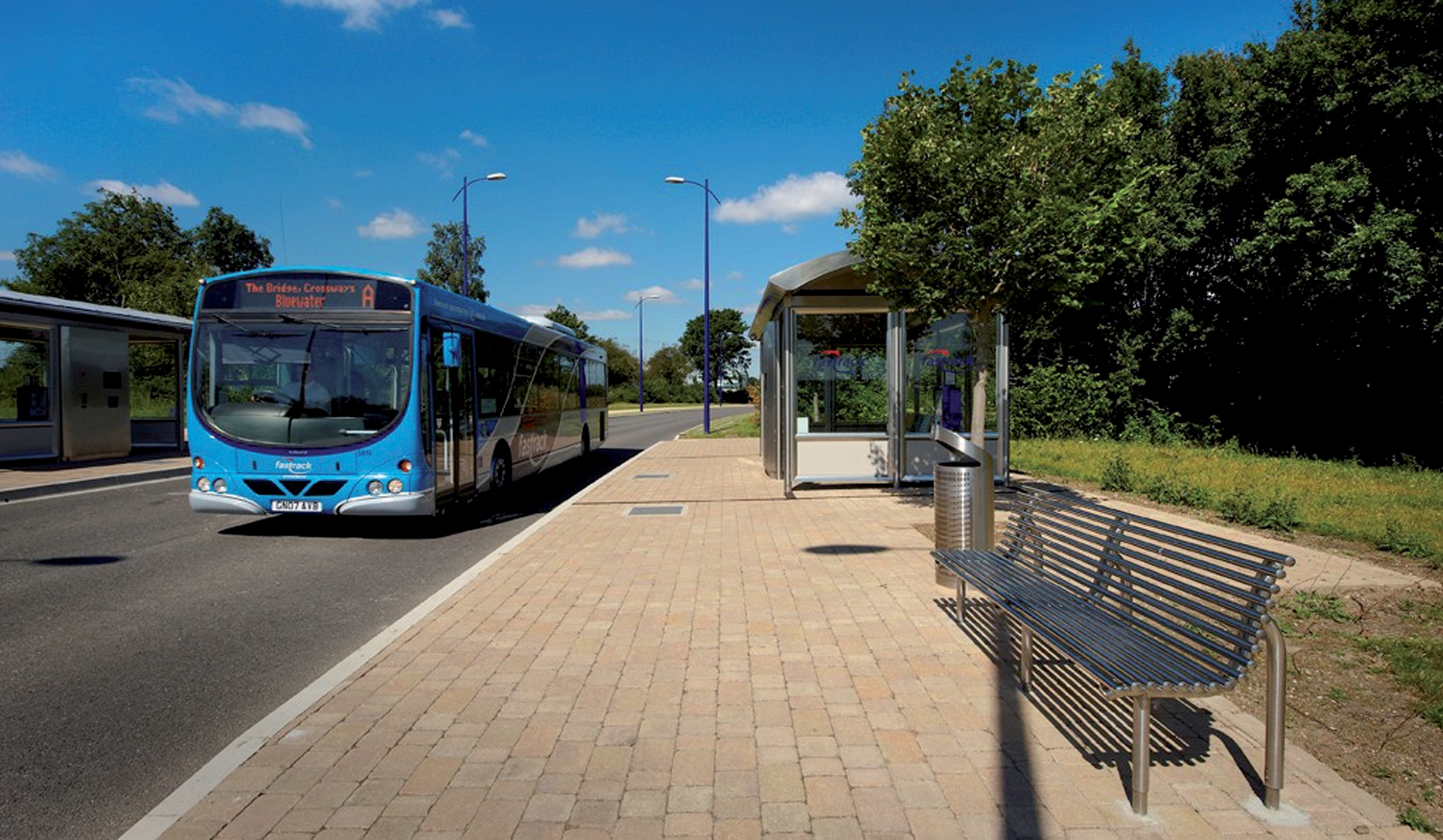David Crawford looks at recent developments in travel information display systems. It is important to remember that we are investing in Real-Time Passenger Information [RTPI] to increase ridership," says Robert Burke, Managing Director of New Zealand transit tracking technology specialist Connexionz, which has been involved in at-stop and remote passenger information since 1995. "Superior information improves the perception of public transport reliability and gives the passenger more choices and greater con

A Trapeze ITS (formerly Continental Automotive) at-stop display operating on the ZVV public transport network in Zurich, Switzerland.
David Crawford looks at recent developments in travel information display systems.
It is important to remember that we are investing in Real-Time Passenger Information [RTPI] to increase ridership," says Robert Burke, Managing Director of New Zealand transit tracking technology specialist Connexionz, which has been involved in at-stop and remote passenger information since 1995. "Superior information improves the perception of public transport reliability and gives the passenger more choices and greater control."The end result is increased ridership, from both existing passenger retention and migration from other modes of transport." The company cites research indicating that, to reach 80 per cent of bus passengers, relevant information needs to be available at 30 per cent of bus stops. Its domestic deployments include the RTPI display-dense Christchurch bus network and city-centre Bus Xchange ('a stop, not a terminal'), implemented with PBS&J as consultants. The resulting additional 7.5 million public transport passenger trips achieved over six years has succeeded in deferring predicted expenditure on road maintenance.
Connexionz was one of the companies specialising in passenger information display systems, from both inside and outside North America, that took advantage of the October 2009 opportunity to exhibit at the first-ever Products & Services showcase staged by the American Public Transportation Association (
Its products include the BusFinder, designed non-intrusively to enable travellers to access next bus arrivals for up to 12 routes at rural and residential stops with fewer than 10 services per hour and fewer than five passengers boarding per route. Bus TV aims at busier stops, with 17in LCD to 42in plasma displays designed to allow mixing in of additional content.
The company's presence at APTA underlines a 2009 strategic decision to focus on the North American market, following the sale of its UK-based European business via a management buyout. The latest of six recent US contracts involves the US$1.5 million supply of an RPTI system covering 69 vehicles and 710 bus stops for the Eastern Contra Costa Transit Authority in the Bay Area of San Francisco.
Texas, US-headquartered digital transportation communications technology specialist DRI Corporation chose the APTA event to debut its TwinVision subsidiary's Silver Smart series electronic destination sign system for external installation on vehicles. CEO David L. Turney expects to start shipments in the first quarter of 2010.
The new solid-state display product features high-intensity 'sterling' LEDs designed to deliver high-brilliancy messages with reduced power consumption and, with in-built system diagnosis, aims to reduce fleet maintenance and down times. TwinVision claims to be the first established US supplier to bring amber- and multi-coloured, solid-state displays to the North American market.
Founded in 2008 in Virginia, USA, standards-based ITS product developer Ayers Electronic Systems (Ae) claims to be the first US company to have developed a static travel information display sign based on APTA's new Transit Communications Interface Profiles (TCIP) interface standard. This specifies the rules and terms appropriate for the automated exchange of information in transit applications.
Ae's transit station controller (TSC) provides a standard interface between passenger information systems and displays. The TSC supports one LCD display (for major installations, for example at interchanges) and up to eight LED displays (for individual stops or bays).
The controller receives service status information using the TCIP standard, either from its own transit traveller information server or that of the operator. If the operator does not have a standard feed, Ae has developed an extensive library of TCIP encoders and decoders.
Its passenger information displays are designed to comply with US National Electrical Manufacturers Association (NEMA) standards. LCD signs have options for heat exchanges, air conditioners, and/or heaters to reflect the environmental conditions of locations; while future plans include delivery of information via the web and mobile phones.
Commercial sponsorship is the basis of a deployment in Vancouver, Canada, where Ontario-based Omnivex Corporation's software is powering a commuter-oriented digital signage network on the Pacific Coast city's
The roll-out is in a partnership with US electronic billboard specialist Lamar Advertising, which delivers scheduled news and advertising content to commuters. There is in-built provision in the system for the transit authority to post travel alerts and service announcements as needed.
Middle East
The Middle East is proving to be a major growth area for advanced signage systems as its investment in public transport expands in response to road traffic congestion. In May 2009, for example, Swedish company Mobitec, a European subsidiary of DRI Corporation, announced a US$8 million order for theIn September 2009, Karlsruhe, Germany-based
The PIDvisio and PIDscreen 37in TFT displays developed by init give next bus arrivals alternately in Arabic and English, as well as having the capability for video streams at DVD quality. The PIDscreen is designed to offer a wider range of visualisation options than conventional LED displays, with communication between the RTA control centre and the displays via GPRS.
init is acting as an integration and installation partner to general contractor Bond Communications Group. It will handle maintenance of the display systems through its local subsidiary, FZE.
The system has the capability for exchanging connection information bi-directionally with the Dubai Metro, the first line of which opened in September 2009 (see the article on pp.28-29 of this issue). The interface complies with the international Service Interface for Real-time Information (SIRI) standard, ready for later implementation by the RTA on the Metro.
Asia Pacific
In July 2009, Mobitec announced an order worth over US$4 million from a major Indian transit bus manufacturer. Products ordered in India include MobiLED external on-vehicle LED and electronic destination signs and MobiSTOP in-vehicle next-stop indicators.In October, Mobitec secured a further order from Singapore for more than 900 buses and 100 rail cars. The company sees this as a "strategically significant" contract in a key Asian transit market which justified the opening of a new regional business unit. Mobitec Far East Pte will serve a market that currently records over 5,000 new bus registrations each year. The company also plans to grow by cross-selling vehicle tracking/monitoring systems to its signage customer base.
Europe
In Europe, there is now a new name in the field, with the recent acquisition by Switzerland-headquarteredThe company highlights the range's plug-and-play capability with a central system automatically recognising the installation of a newly located sign and making it operational. It also takes pride in the gaining by SmartInfo G4, which showcased at the 2009 UITP Congress in Vienna, Austria, of a product design award from the Hannover, Germany-centred Industrie Forum for compatibility with the urban scene.
UK transport data delivery specialist
The units feature broadcast screens giving bus and rail departures with RTPI and disruption news to be introduced in 2010 when the Essex County Council reaches a decision on its future RTPI data supplier. Interactive touchscreens give value added services such as journey planning and local maps, national and weather news.
The county sees the deployment as a positive step to encourage increased public transport uptake across the county. Comments its Sustainable Travel Team Manager Robbie Watson: "Our pilot showed that good transport information is most effective at the point where people need to make their travel decisions." The Smart Point network is being served by Kizoom's Vision content management, authoring and delivery system. The company says that while the domestic market is currently keeping it very busy, it will be looking further afield when the right opportunities present themselves.











